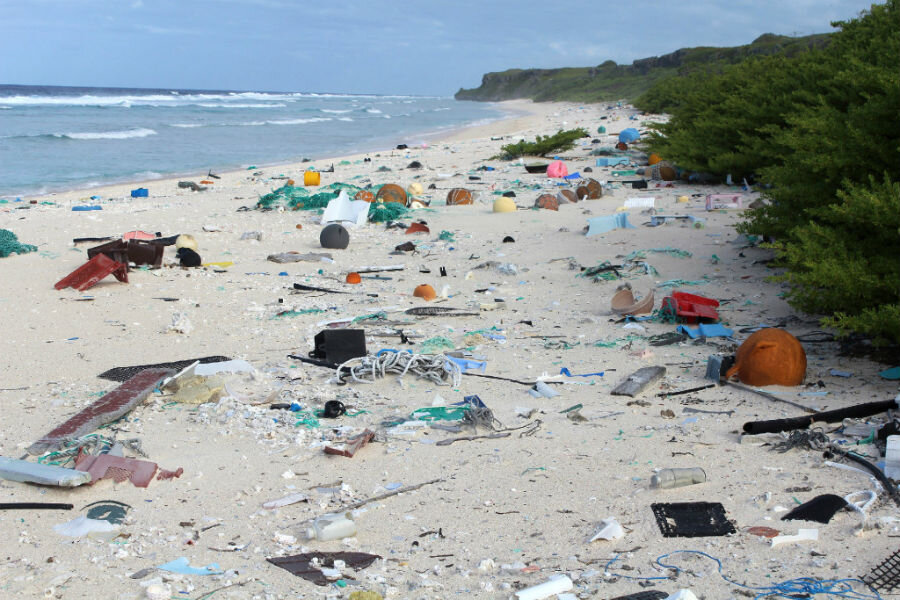Scientists discover unexpectedly dense layer of trash on an uninhabited island
Loading...
| Wellington, New Zealand
When researchers traveled to a tiny, uninhabited island in the middle of the Pacific Ocean, they were astonished to find an estimated 38 million pieces of trash washed up on the beaches.
Almost all of the garbage they found on Henderson Island was made from plastic. There were toy soldiers, dominos, toothbrushes and hundreds of hardhats of every shape, size and color.
The researchers say the density of trash was the highest recorded anywhere in the world, despite Henderson Island’s extreme remoteness. The island is located about halfway between New Zealand and Chile and is recognized as a UNESCO world heritage site.
Jennifer Lavers, a research scientist at Australia’s University of Tasmania, was lead author of the report, which was published Tuesday in “Proceedings of the National Academy of Sciences.”
Dr. Lavers said Henderson Island is at the edge of a vortex of ocean currents known as the South Pacific gyre, which tends to capture and hold floating trash.
“The quantity of plastic there is truly alarming,” Lavers told The Associated Press. “It’s both beautiful and terrifying.”
She said she sometimes found herself getting mesmerized by the variety and colors of the plastic that litters the island before the tragedy of it would sink in again.
Lavers and six others stayed on the island for 3½ months in 2015 while conducting the study. They found the trash weighed an estimated 17.6 tons and that more than two-thirds of it was buried in shallow sediment on the beaches.
Lavers said she noticed green toy soldiers that looked identical to those her brother played with as a child in the early 1980s, as well as red motels from the Monopoly board game.
She said the most common items they found were cigarette lighters and toothbrushes. One of the strangest was a baby pacifier.
She said they found a sea turtle that had died after getting caught in an abandoned fishing net and a crab that was living in a cosmetics container.
By clearing a part of a beach of trash and then watching new pieces accumulate, Lavers said they were able to estimate that more than 13,000 pieces of trash wash up every day on the island, which is about 10 kilometers (6 miles) long and 5 kilometers (3 miles) wide.
Henderson Island is part of the Pitcairn Islands group, a British dependency. It is so remote that Lavers said she missed her own wedding after the boat coming to collect the group was delayed.
Luckily, she said, the guests were still in Tahiti, in French Polynesia, when she showed up three days late, and she still got married.
Lavers said she is so appalled by the amount of plastic in the oceans that she has taken to using a bamboo iPhone case and toothbrush.
“We need to drastically rethink our relationship with plastic,” she said. “It’s something that’s designed to last forever, but is often only used for a few fleeting moments and then tossed away.”
Melissa Bowen, an oceanographer at the University of Auckland in New Zealand who was not involved in the study, said that winds and currents in the gyre cause the buildup of plastic items on places like Henderson Island.
“As we get more and more of these types of studies, it is bringing home the reality of plastic in the oceans,” Dr. Bowen said.







